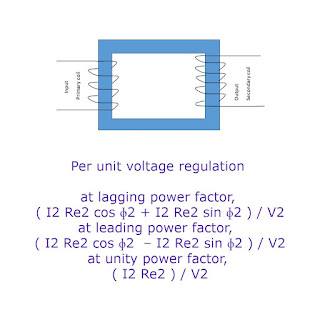Transformers are vital components of electrical power systems, used for transmitting and distributing electrical energy at different voltage levels. Voltage regulation is an essential aspect of transformer design and operation, as it ensures that the output voltage remains stable under varying load conditions. In this article, we will discuss the basics of voltage regulation of transformer, how it is achieved, and the factors that affect it.
What is Voltage Regulation of transformer ?
Voltage regulation of transformer is the ability of a transformer to maintain a stable output voltage at the secondary winding under varying load conditions. Also, the voltage regulation of transformer is the arithmetic difference between secondary voltages at no-load condition and full-load condition. A transformer's output voltage is directly proportional to the turns ratio between the primary and secondary windings. Therefore, if the input voltage remains constant, the output voltage can be controlled by adjusting the number of turns in the secondary winding.
The voltage regulation of transformer is defined as the change in the secondary voltage from no load to full load, expressed as a percentage of the rated voltage. For example, if a transformer's rated voltage is 1000V and the voltage drop from no load to full load is 50V, the voltage regulation is 5%.
Formula for voltage regulation of transformer is given by,
Voltage regulation = V₀₂ - V₂
Percentage voltage regulation = (V₀₂ - V₂) X 100% / V₀₂
where, V₀₂ = Secondary voltage at no-load
V₂ = Secondary voltage at full-load or load
Types of Voltage Regulation of transformer
There are two types of voltage regulation:-
1. Regulation at lagging power factor
Per unit voltage regulation = ( E2 – V2
) / V2
= ( I2 Re2 cos ɸ2 + I2 Re2 sin ɸ2 ) / V2
2. Regulation at leading power factor
Per unit voltage regulation = ( E2 – V2 ) / V2
= ( I2 Re2 cos ɸ2 – I2 Re2 sin ɸ2 ) / V2
3. Regulation at unity power factor
Per unit voltage regulation = ( E2 – V2 ) / V2
= ( I2 Re2 ) / V2
Where Re2 = R₂ + R₁ / α²
and α = N1 / N2
[ ∵ N1 = primary turn, N2 = secondary turn ]
Factors Affecting Voltage Regulation
The voltage regulation of a transformer is affected by several factors, including:
Load Power Factor: The load power factor is a measure of the efficiency with which a load consumes electrical energy. A load with a low power factor will cause the output voltage of a transformer to drop, resulting in poor voltage regulation.
Transformer Design: The design of a transformer, including the number of turns in the windings, the core material, and the insulation, affects its voltage regulation. Transformers with more turns in the windings will have better voltage regulation, while those with lower quality insulation may experience voltage drop.
Transformer Size: The size of a transformer is directly related to its voltage regulation. Larger transformers with higher capacity have better voltage regulation than smaller transformers.
Ambient Temperature: The ambient temperature can affect the performance of a transformer, as high temperatures can cause the insulation to degrade, leading to voltage drop and poor voltage regulation.
Load Characteristics: The characteristics of the load, including its impedance, inductance, and capacitance, can affect the voltage regulation of a transformer.
Improving Voltage Regulation
Several techniques can be used to improve the voltage regulation of a transformer, including:
Tap Changers: Tap changers are devices that allow the number of turns in the primary or secondary winding to be adjusted to control the input or output voltage, respectively.
Automatic Voltage Regulators: Automatic voltage regulators (AVRs) are devices that regulate the voltage of a transformer by automatically adjusting the number of turns in the secondary winding to compensate for changes in load conditions.
Voltage Stabilizers: Voltage stabilizers are devices that regulate the voltage of a transformer by using electronic circuits to adjust the output voltage.







No comments:
Post a Comment
----Please share your opinion with us-----